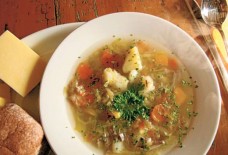Chicago Area School Helping Arab Students Make Transition to America
When newly arrived students from the Middle East express shock at the spaghetti straps and short skirts worn by some classmates at an Oak Lawn high school, teacher Rahaf Othman explains just how casually American teenagers tend to dress.
Othman has a knack for communicating with immigrant Arab students because she is fluent in Arabic and well-versed in Middle Eastern culture. She teaches social studies at Richards High School, part of Oak Lawn Community High School District 218, which has seen an increase in the number of Arab students in recent years.
Richards now has 134 Arab students, said Lori Szeszycki, curriculum director of the district’s English Language Learners program, and tries to meet their cultural needs as well as their academic needs. There are five teachers and one aide who speak Arabic at Richards, giving the school the distinction of having more native Arabic-speaking teachers than nearly any other in the suburbs, according to the Illinois State Board of Education.
Richards and schools in neighboring Palos Hills, Justice, Bridgeview, Burbank and Chicago Ridge have the highest number of Arabic-speaking students whose second language is English in the area, school officials said.
That’s because the area has been a magnet for Arab families spreading out from the immigrant community in Chicago’s Marquette Park neighborhood. Others moved to the area to be closer to the Mosque Foundation in Bridgeview, which is attended by more than 5,000, and to the Little Arabia commercial district along Harlem Avenue, between 79th and 115th Streets, with its Middle Eastern groceries, restaurants, clothing stores and insurance businesses.
Twenty-nine of Richards’ Arab students are recent arrivals from, among other places, Yemen, Jordan, Gaza and the West Bank, and are in ELL, a program for students whose second language is English. The school has made several changes to try to make the students feel more welcome.
Arab girls now can wear long-sleeve shirts and pants in gym class — a departure from policy that required girls to bring a written explanation from a religious leader explaining why they couldn’t show more skin.
“The Arab culture is so different from Westernized culture, especially for newcomers from another country,” said Othman, who is Palestinian-American. “One of the biggest cultural differences that our students experience is the way women dress in this country. They are just not used to females exposing that much skin. In the countries they came from, females usually are covered up from the neck down.”
At lunchtime, cafeteria workers know to alert Muslim students and teachers about pork-free foods, Othman said. “We provide alternative break areas for students who are observing Ramadan and wish to fast, and we translate as many of our parent and community-related letters as possible into Arabic, Polish and Spanish,” Szeszycki said.
When a school has at least 20 students who speak the same native language, the State Board of Education requires the district to hire a teacher who speaks that language.
At Richards, student Sabrina Said, president of the Unity Club, which teaches students about different cultures and which Othman leads, said the high school’s hiring of native Arabic-speakers and other accommodations have helped students feel more welcome.
Janice Neumann
Chicago Tribune



